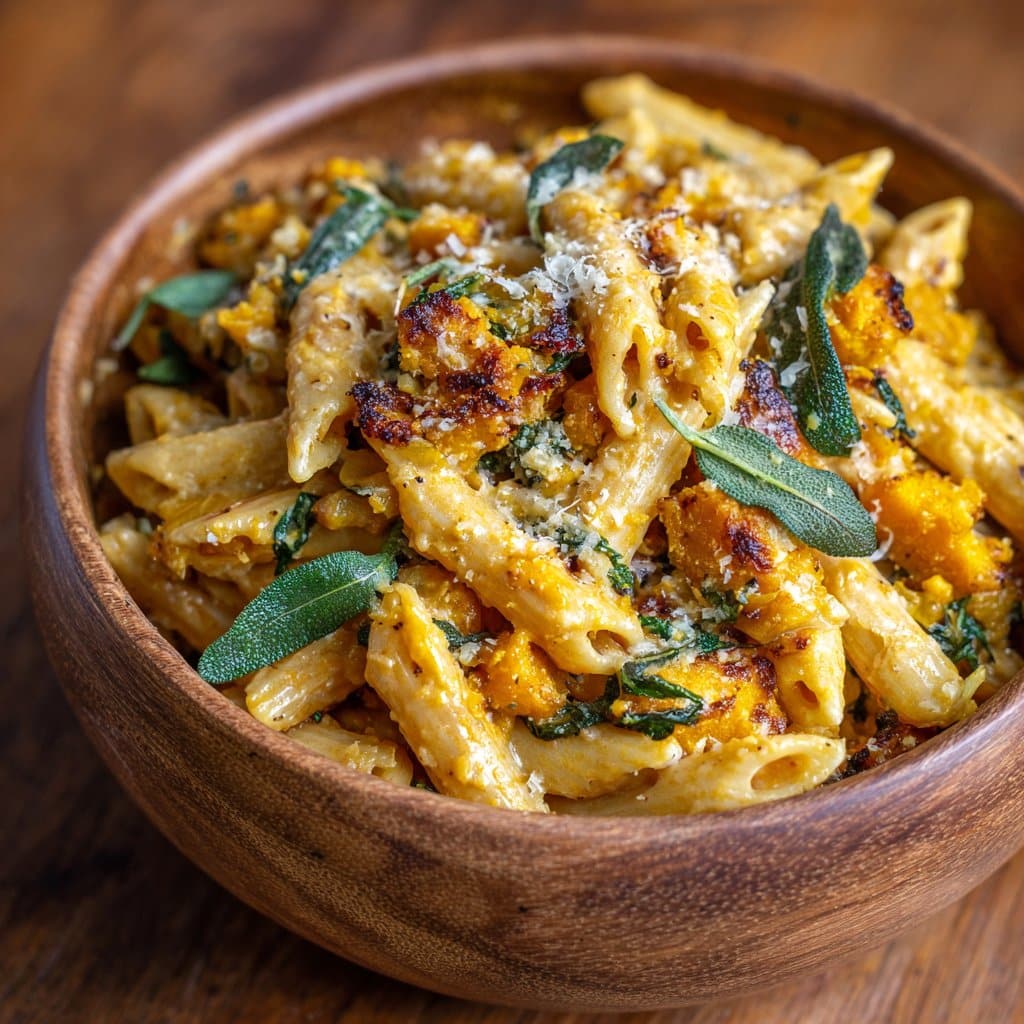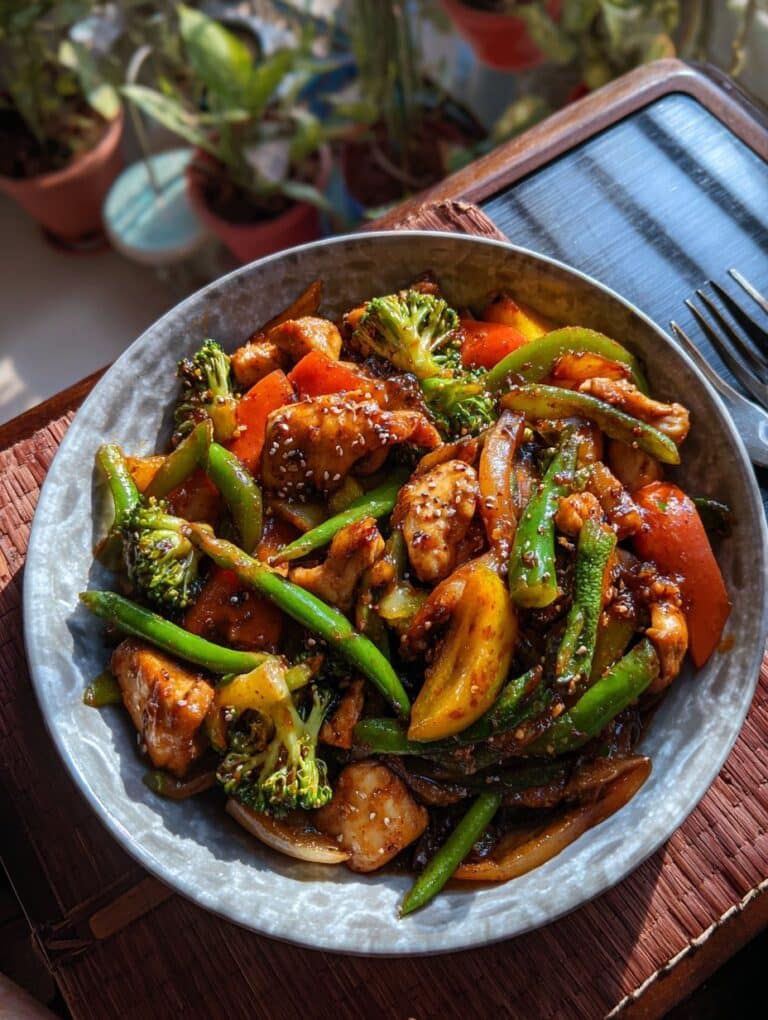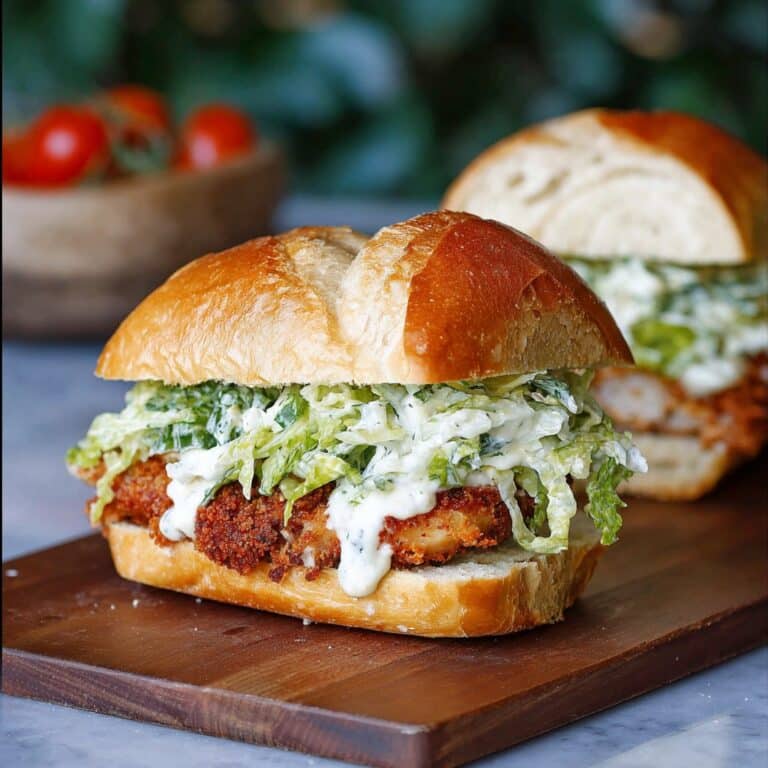Butternut Squash & Sage Pasta: My Cozy Go-To Dinner Recipe
Let Me Tell You Why I Always Come Back to This Pasta
Alright, so here’s the thing—Butternut Squash & Sage Pasta is basically my culinary comfort blanket. I think the first time I made it, I was half-hoping it would turn into mac ‘n’ cheese (it doesn’t, but it kind of hits the same spot, you know?). Anyway, it was one rainy Saturday in November (why is it always raining when I crave squash?) and I realized I’d mixed up nutmeg with cinnamon, but honestly, I think that’s the day I realized cooking is mostly about happy middles, not perfect endings. And, uh, if someone tells you this dish is fancy, tell them it’s literally just one roasting pan, one skillet, and zero pretensions.
Why You’ll Love This (Or At Least Why I Do)
I make this when I can’t decide between a salad and something a little carby, especially when my fridge has a lurking squash eyeing me every time I reach for milk. My partner goes full goblin for it because that sauce gets so lush and sweet. Oh, and sometimes I just need an excuse to use up slightly sad herbs—I mean, who’s buying fresh sage every week? (Not me; I forget the rest is in the fridge until it’s slightly floppy, but it’s fine here.) This even got my picky brother to eat seconds—though he did pick out the sage leaves. Sigh.
So… About Those Ingredients
- 1 medium butternut squash (about 700g-ish)—I’ve cheated with sweet potato and, you know what, it’s totally fine
- 2-3 tbsp olive oil (confession: I use whatever oil’s open)
- A big handful of fresh sage leaves (or—don’t tell anyone—dried is ok in a pinch, just use less)
- 2-3 garlic cloves, smashed, or diced (my mate Jen swears by a shallot, but it’s a free country)
- 250-300g pasta (I love rigatoni, but spaghetti works, or whatever form your pantry coughs up)
- Salt and black pepper, plenty
- 60ml double cream or a splash of oat cream if you, like me, sometimes forget to buy dairy
- Freshly grated parmesan—honestly, bagged stuff is OK, but real cheese does hit different
- A squeeze of lemon (optional—my nan always insisted this, but sometimes I forget entirely)
- Pinch of nutmeg or cinnamon (optional; gives lovely warmth but do what you fancy)
Let’s Get Cooking—Here’s How I Do It
- Roast that squash; Oven at 200°C (400°F). Peel and chop the butternut into little cubes. (Peeling’s a pain, sorry, but you could leave the skin on if you’re brave—it softens up.) Toss with a drizzle of olive oil, salt, pepper, and half the sage (just rip it over the top). Spread on a tray. Pop in for 30 mins, or until soft and just golden at the edges. This is when your kitchen starts to smell incredible.
- Boil your pasta. Salted water, cook pasta just under al dente. Save a mug of that starchy water before draining. I always forget, then have to fish a bit out of the sink, and please—don’t be like me. Just save it ahead.
- Make the sauce magic. In your biggest skillet, a glug of olive oil, medium heat. Toss in rest of the sage and let it dance until a bit crispy. Chuck in garlic; let it just go golden (don’t burn it, it gets bitter—I learned this the hard way). Add roasted squash and, using a spoon or potato masher, smoosh most of it into a chunky sauce. Don’t worry if it’s a bit lumpy.
- Cream time. Pour in cream and stir, then add a splash or two of reserved pasta water until it’s loose enough to coat pasta. Here’s where I sneak a taste and maybe a sprinkle of nutmeg or a drop more lemon if the mood strikes.
- Finish it off. Tumble in the drained pasta, stir everything together. Cheese mountains on top, more pepper, maybe a sprig of sage if you’re feeling posh. Serve immediately, or stand in the kitchen eating forkfuls out of the pan (no judgment; been there).
Not-So-Professional Notes From My Kitchen
- I tried fancy imported pasta once—didn’t notice much difference, so use what you’ve got.
- Occasionally I burn the sage and it tastes a bit “toasty”—just pick out the darkest bits and pretend you meant to.
- I sometimes swap parm for goat cheese (especially if it’s reduced at the shop) for a tangier kick.
- If you skip the cream, use a bit more of pasta water—it’s silkier than you think.
If You Fancy Mixing Things Up
- Added a handful of toasted walnuts one time—gorgeous crunch.
- Used spinach to “healthy up” the dish. Actually, not my favorite—thought I’d love it, but it kind of fought with the squash.
- Chilies work for a bit of heat; my friend Jules adds a flick of chili flakes and says it’s non-negotiable.
- Smoked paprika makes it taste a bit autumn-y if you’re into that vibe.
Gear I Use (Or Don’t)
So, a big roasting tray for the squash, and a roomy nonstick skillet for the sauce—though I’ve cobbled this together in a wok when nothing else was clean. Potato masher optional, but smashing with a fork also works. If your peeler is blunt (like mine about half the year), use a sharp knife or just roast the squash with peel and deal with it at the table.

Storing Leftovers
It keeps in the fridge for 2 days, but let’s be real—I’ve never had it stick around that long. Reheat with a splash of hot water or cream; tastes sort of better the next day, or that’s just my opinion. I wouldn’t freeze it, the sauce texture goes strange (trust me, learned the hard way).
How I Serve It Up at Home
Usually just in giant bowls, parmesan avalanche on top. Sometimes with a side salad if I’m pretending to be balanced. Once I made garlic bread but it was, honestly, total overkill. Sunday evenings with a glass of whatever’s open—nothing makes me happier.
Stuff I Wish I’d Known (a.k.a. Pro Tips)
- Let the squash caramelize—it’s tempting to rush it but, honestly, I once pulled it out early and got absolute mush. You want those crispy edges.
- Don’t drown it in cream, or it gets heavy fast. Start with less—you can always add.
- Pasta water is liquid gold, don’t skip it. (I mean, unless you like sticky pasta, in which case… more power to you.)
Your Questions, Answered
(Not Just the Ones I Invented!)
- Can I make this vegan? Yep! Swap cream for oat or soy, and go for vegan cheese or a sprinkle of nutritional yeast. Actually, it’s almost better that way.
- Do I really need fresh sage? Fresh is tops, but dried’s fine. I’ve used both (sometimes together, if I’m low on one). Just go easy on dried, it’s punchier.
- Does it reheat well? Sure thing. It can thicken up, though, so add a splash of hot water when warming—don’t skip that, or you’ll end up with pasta brick. Ask me how I know…
- What if I forget pasta water? You aren’t alone—been there. A little hot tap water plus a dollop of butter works, but, ah, it’s never quite the same.
- Can I skip the cheese? Yeah, but maybe add a bit more salt or a dollop of miso paste for extra oomph. Or just eat it as-is—nothing wrong with a simple bowl.
Weird aside—last time I roasted squash, my cat tried to climb onto the counter for a whiff. Turns out, cats aren’t keen on sage; she gave me a look like I’d insulted her ancestors. Go figure.
If you’re curious about more ways to punch up your pasta game, I sometimes pull ideas from here or, for proper pasta-cooking basics, Serious Eats has you covered. Anyway—let me know how it goes! Or, if it all goes sideways, order a pizza. We’ve all been there.
Ingredients
- 1 medium butternut squash (about 2 lbs), peeled and cubed
- 2 tablespoons olive oil
- 12 oz pasta (such as rigatoni or penne)
- 1 small yellow onion, finely chopped
- 2 cloves garlic, minced
- 8-10 fresh sage leaves, chopped
- 1/2 cup grated Parmesan cheese
- 1/2 cup heavy cream
- Salt and freshly ground black pepper, to taste
Instructions
-
1Preheat the oven to 400°F (200°C). Toss the butternut squash cubes with 1 tablespoon olive oil, salt, and pepper on a baking sheet. Roast for 25-30 minutes, or until tender and golden.
-
2While the squash roasts, cook the pasta in a large pot of salted boiling water according to package instructions until al dente. Reserve 1/2 cup of pasta water, then drain the pasta.
-
3In a large skillet over medium heat, heat 1 tablespoon olive oil. Sauté the onion for 3-4 minutes until soft, then add garlic and sage. Cook for 1 minute until fragrant.
-
4Add the roasted butternut squash to the skillet. Mash a few pieces to create a creamy texture. Stir in heavy cream and Parmesan cheese. Season with salt and pepper.
-
5Add the drained pasta to the skillet and toss to combine. If needed, add reserved pasta water to loosen the sauce. Serve hot, garnished with extra Parmesan and sage.
Approximate Information for One Serving
Nutrition Disclaimers
Number of total servings shown is approximate. Actual number of servings will depend on your preferred portion sizes.
Nutritional values shown are general guidelines and reflect information for 1 serving using the ingredients listed, not including any optional ingredients. Actual macros may vary slightly depending on specific brands and types of ingredients used.
To determine the weight of one serving, prepare the recipe as instructed. Weigh the finished recipe, then divide the weight of the finished recipe (not including the weight of the container the food is in) by the desired number of servings. Result will be the weight of one serving.
Did you make this recipe?
Please consider Pinning it!!






